Be Humble, Be Noble: Graduation at Linworth AP
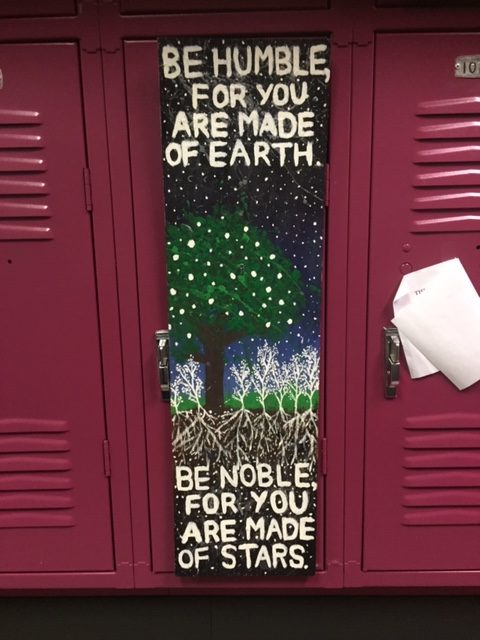
Worthington has countless gems—people, places, events, organizations and institutions—that together make us who we are. These many jewels are often hidden from easy sight, fully known only to those intimately involved. I experienced such a gem yesterday at the Linworth Alternative school (http://www.linworth.org/about/). My step-daughter, Tulia, was graduating, and between programs I had a chance to wander the hallways and classroom interiors. I quickly discovered that these spaces are chock full of artwork and classwork and vignettes of worldly wisdom, all created and placed by students past and present (and faculty alike).
The mediums and formats range from big to small, intricate to bold, formal to scribbled. Several students had adorned their lockers with artwork, one of which was the inspiration for the title of this post, expressing so naturally a whole philosophy of life.
The cumulative effect of absorbing this abundance of youthful creativity exceeded that of the typical trip to an art museum. The expression was so real and poignant and evocative of that springboard point of life, that I left uplifted—not only glad and proud that Worthington can boast such a place, but also more hopeful about the youth of today and the prospects for tomorrow. I’ll quit writing now, and let the images speak for themselves. I hope you enjoy them and experience a renewal of sorts.
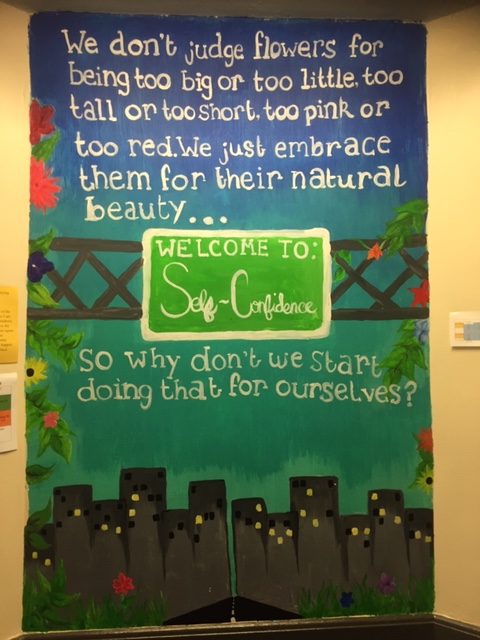
A large format painting near the front door. Who doesn’t need, in some way, this message?
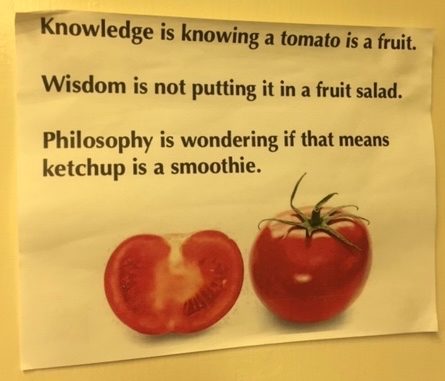
Humor and irony were often at or near the surface. I’ll never eat french fries the same way…
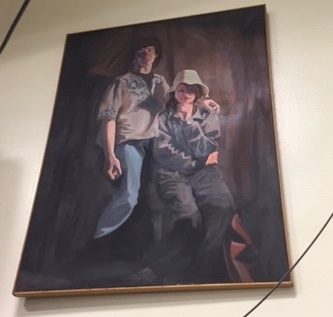
A large painting in the main meeting hall, one of the many student masterpieces just casually placed throughout the building, creating an overall vibe of creativity, self-expression, insight at an early age, love of beauty, a bit of angst, a sense of struggle and the sources of strength.
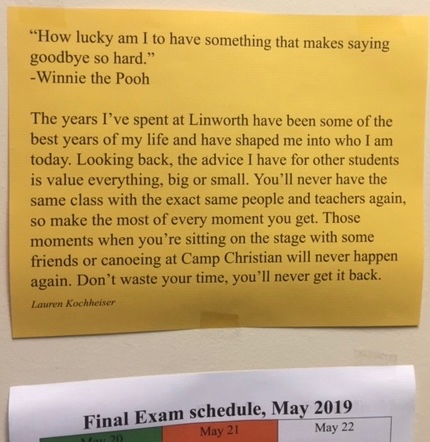
Sage words for those that will follow: “Looking back, the advice I have for other students is value everything, big or small…. Don’t waste your time, you’ll never get it back.”

Hope at the center of peace, a symbol for every generation…
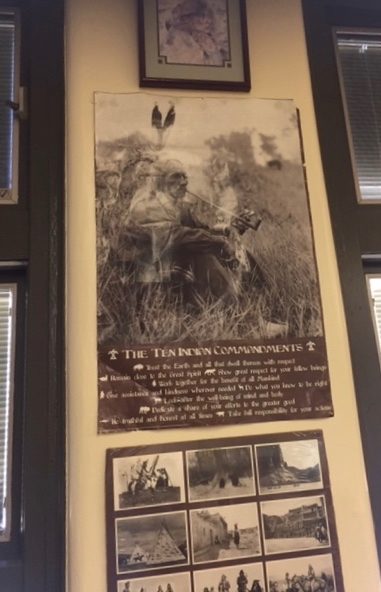
The Ten Indian Commandments, unpretentiously offering its wisdom, hanging there on a sliver of wall amidst other reminders of another people and way of life. Time may tell who is the wiser: “Treat the earth and all that dwell thereon with respect—Remain close to the Great Spirit—Show great respect for your fellow beings—Work together for the betterment of all humankind—Give assistance and kindness wherever needed—Be truthful and honest at all times—Do what you know to be right—Look after the well-being of mind and body—Take full responsibility for your actions—Dedicate a share of your efforts to the greater good.”
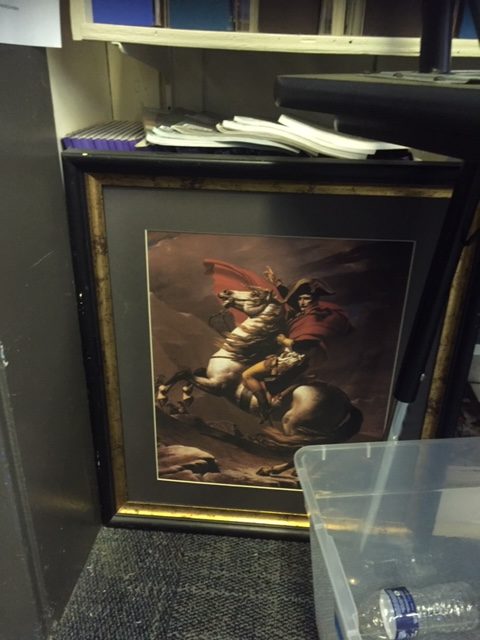
Yes, the western canon is present, but given its proper place.

Lest we forget to question…
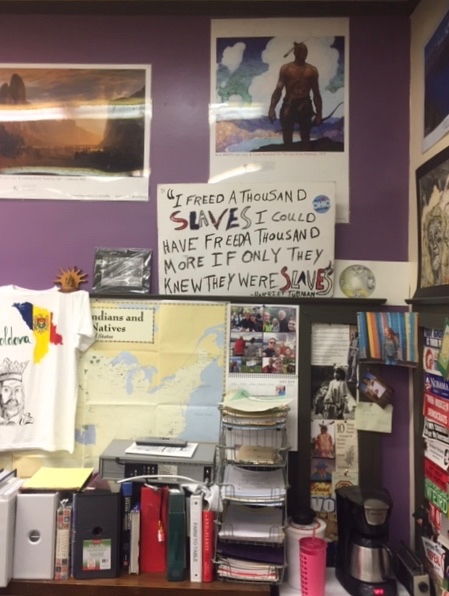
There, truly in the middle of the cluttered daily hubbub is this (apocryphal) gem from Harriet Tubman: “I freed a thousand slaves. I could have freed a thousand more if only they knew they were slaves.”

Nine outstanding portraits just there at the bottom of a door…
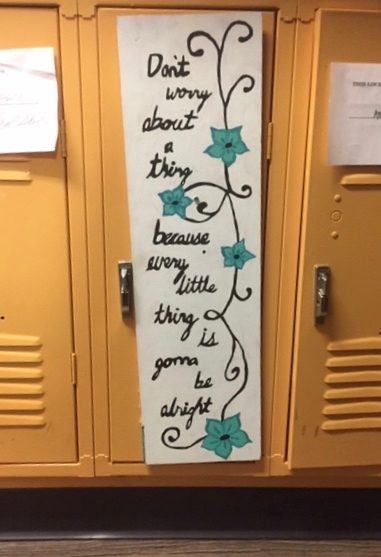
A “simple” locker adornment, comprised of a Bob Marley lyric, one I’ve heard hundreds or thousands of times, but there, on the locker, it struck me anew. Are we simply to not worry, or to not worry about a thing?
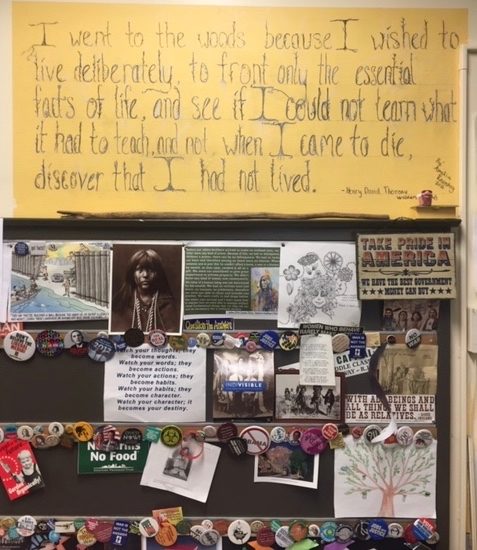
Thoreau’s clarion call to live deliberately: “I went to the woods because I wished to live deliberately, to front only the essential facts of life, and see if I could not learn what it had to teach, and not, when I came to die, discover that I had not lived” … and he adds, in the text of Walden, “for living is so dear.”

To make sure I don’t give the impression that Linworth is only about the visual arts, here’s something from the Euclid room: a flowchart diagram for a most handy invention that we could all probably use now and then.

Somewhere back in grad school I read that the ancient Greeks believed that Beauty was not simply in the eye of the beholder, but was a vital force positively influencing and shaping all those in its surroundings—yes, the Athenians constructed the Parthenon, but its excellence and beauty made Athens extraordinary and unconquerable. The Spartans knew this truth about the strength of beauty. I thought of this as I walked through the building, imagining the daily life of Linworth students, and the enduring impact of all these words and works—visual, philosophical, topical, ironic, inspiring, and wise—that bump in to you at every turn. “Going to the mountains is going home.” – John Muir
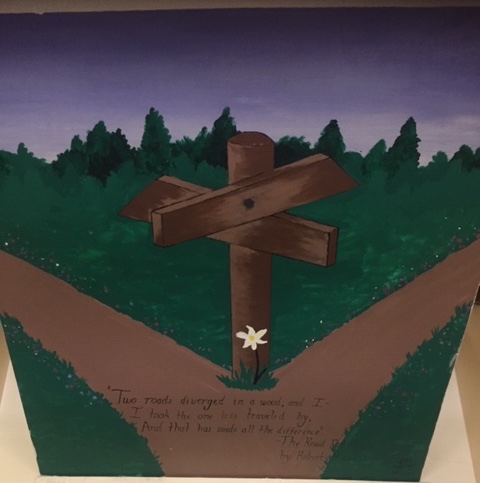
In the front foyer, on the sloped ceiling heading down to the main room, is this o-so-important reminder, courtesy Robert Frost, of the key choice we face, perhaps nowhere so acutely as when young and the wide world lies open before you: “Two roads diverged in a wood, and I—I took the one less traveled by, And that has made all the difference.”

Performance art? Whatever the case, the message is universal.

And, outside, on the eastern side of the building, the peace pole, in English and Russian, “May Peace Prevail on Earth.” Timeless.
(I’d like to acknowledge that the artwork and its presentation is so organic within the context of Linworth that it is certainly possible that my understanding and presentation are off-base. I don’t think that’s the case, but if so the fault is all my own!)
You must be logged in to post a comment.